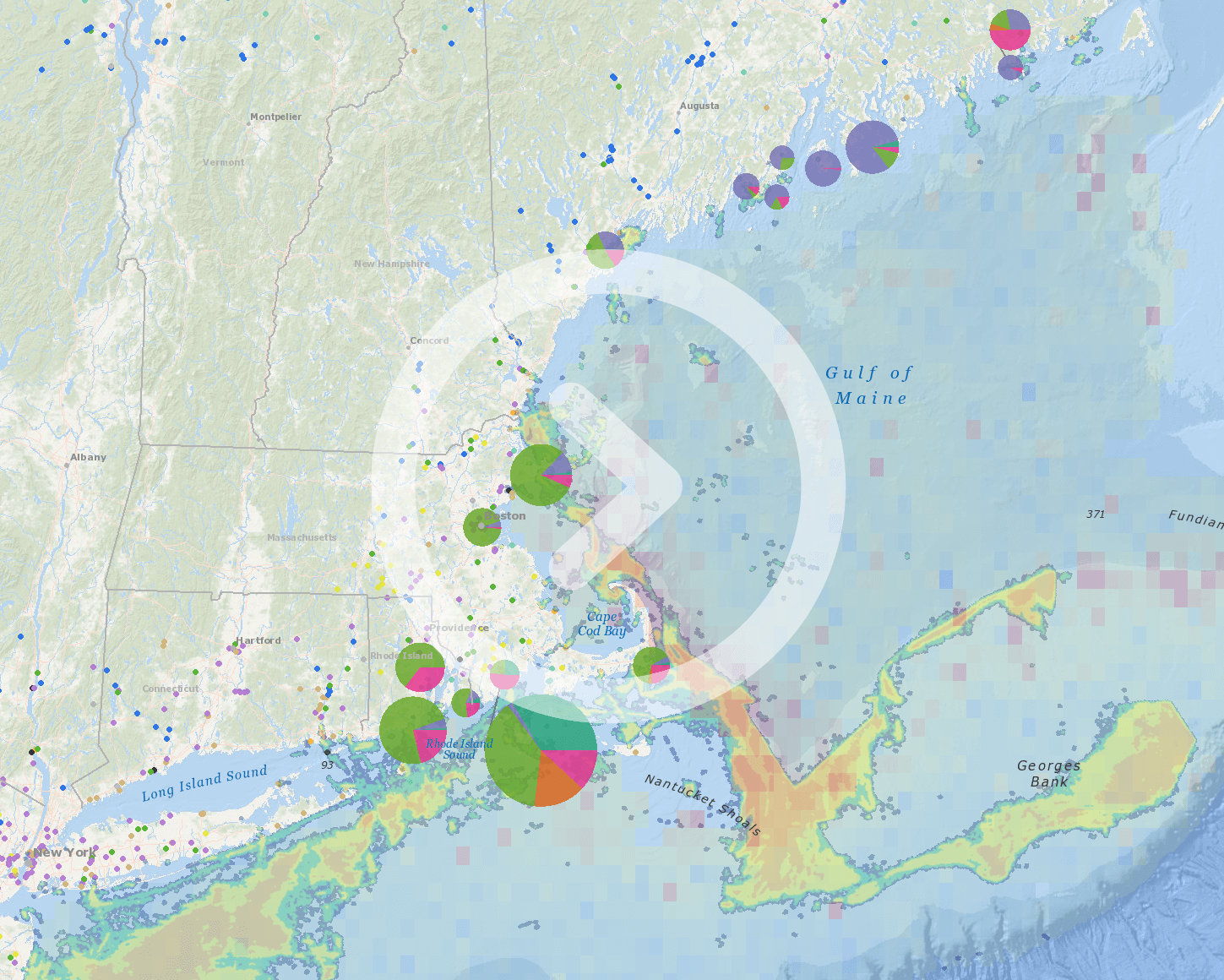The Northeast Ocean Data Working Group is pleased to announce that the water quality map now shows water bodies for which a Total Maximum Daily Load (TMDL) has been established. The TMDL sites shown on the map are based on a data service (last updated in August 2014) hosted by the Environmental Protection Agency (EPA).
The Federal Clean Water Act requires states to identify water bodies where existing pollution controls are not sufficient to meet water quality standards and to develop a “pollution budget” designed to restore the health of the impaired body of water. This budget, generally referred to as a TMDL, reflects the maximum amount of the pollutant that can be discharged to a specific water body to meet water quality standards. Water bodies may be impaired for more than one pollutant, and each pollutant requires its own TMDL. The objective of a TMDL is to design an implementation plan to restore impaired water bodies.
TMDL sites appear on the map only when zoomed in on a small geographic area. Users can click on a watershed (indicated by purple lines) to zoom automatically and see TMDLs in that watershed. For a detailed TMDL report, click on a TMDL site on the map.
Examples of TMDL Maps

Western Long Island Sound

Greater Boston

Casco Bay
TMDLs and Impaired Waters
Using the buttons in the legend box, TMDL sites can be displayed on the map along with other waters that have been designated as impaired under Section 303(d) of the Clean Water Act but that do not yet have a TDML established.

TMDLs (yellow) and impaired waters (red) in the Portland, Maine, area.

